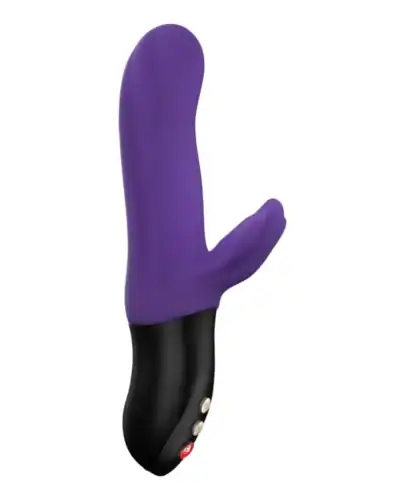
Beyond Binary: Inclusive Sex Toys
In recent years, the sex toy industry has begun moving “beyond the binary” – evolving pleasure products to serve every body’s needs and exploring beyond the binary how pleasure products are evolving for every body . Experts note that inclusive sex toys made for all bodies can open new pathways to pleasure and fulfillment. For transgender and non-binary individuals, whose bodies and gender identities may not fit traditional marketing, sexual wellness often requires specially designed tools and spaces. Indeed, gender dysphoria – the distress felt when one’s gender identity doesn’t match their assigned sex at birth – can dampen sexual enjoyment.
Conversely, affirming pleasure can trigger gender euphoria, a feeling of joy and relief when one’s gender is recognized and celebrated. As one analysis puts it, sex toys can help navigate gender dysphoria during sex, turning potentially dysphoric experiences into affirming ones. This article explores how inclusive design, community feedback, and innovation are expanding sexual wellness for trans and non-binary people through sex toys and pleasure products.
Beyond Binary Sexual Wellness
Sexual wellness – a holistic state of physical and emotional well-being in sexuality – is a key part of overall health for everyone. However, it can be harder to achieve for people whose gender identity conflicts with societal expectations of their bodies. Research shows gender dysphoria “impacts sexual engagement and satisfaction” in transmasculine and non-binary people, especially before any desired medical transition.
A recent study found that many transmasculine/nonbinary folks avoid sexual acts involving the body parts that cause them the most dysphoria. For example, a person who feels distress about their genitals may shy away from penetrative acts. As a result, gender-affirming sexual experiences and tools are crucial to help trans bodies enjoy intimacy.
Inclusive Pleasure and Affirming Access
In practice, surveys find very high sex toy use among trans and non-binary people. One community survey reported that 88% of trans/non-binary participants have used a sex toy, and 77% in the past six months. Couples play with toys is also common: 81% had used toys with a partner (63% of those recently). The most popular devices are versatile vibrators and massagers (bullets, wands), as well as strap-ons, clitoral vibrators, and anal toys. This suggests that inclusive toy use is an important part of sexual wellness for gender diverse people, including trans men, trans women, and non-binary people alike. As one participant put it, “The perfect sex toy can be used on various parts of the body, on different bodies,”emphasizing adaptability. In other words, a toy that stimulates any erogenous zone can boost pleasure and confidence for anyone, regardless of their gender identity.
Access to affirming pleasure can also help relieve gender distress. Many trans people report that the right toy helps them feel more comfortable in their bodies. For instance, Vibrators that avoid direct contact with dysphoric anatomy, or that provide pleasurable sensations without a body part being touched, can allow someone to reach orgasm on their own terms. One study found that using a sex toy enabled participants to “embrace vulnerability,” improving well-being and even reducing gender dysphoria. Another report concludes that for many trans and nonbinary individuals, sex toys hold unique significance beyond simple pleasure: they “helped alleviate body dysphoria, release inhibitions, and affirm gender identity.”research. In short, inclusive sex toys can directly contribute to better sexual wellness by affirming a person’s gender and giving them agency over their pleasure.
Beyond Binary Design in Pleasure Products
For too long, most sex toys were made for cisgender and heterosexual audiences. Many websites still divide items into “for him” and “for her,” leaving out everyone who doesn’t fit those labels. Inclusive design rejects that binary system. It means creating toys that aren’t labeled “male” or “female” and using flexible, neutral packaging. Brands like Gender X show this clearly. One device can fit many moods and bodies. This “one toy, many uses” idea defines gender-neutral pleasure. Smaller, inclusive brands are also growing.
Even larger companies are changing how they design and market toys. Fun Factory now makes bright, stylized vibrators and plugs that avoid realistic anatomy. Retailers encourage shoppers to pick non-gendered wands, plugs, and rings that work for any body. These toys stimulate multiple zones and bring pleasure without gendered limits. Stores are shifting, too.
They also sell pumps designed for bottom growth. Trans users praise wearable vibrators and suction toys for comfort and hands-free use. More packaging now describes body parts, not gender, so shoppers can focus on sensation and function. Experts say true inclusivity requires more than neutral colors. It means involving trans and nonbinary voices in design, using inclusive imagery, and removing “his” and “hers” language. Gender-neutral toys help people express what feels affirming and turn intimacy into connection, comfort, and confidence.
Community Innovation and Inclusive Marketing
The move toward inclusivity isn’t just theoretical – it’s driven by real people and businesses. Community feedback and activism play a big role. Many queer and trans-led sex shops have sprung up, and their founders often emphasize inclusion in every aspect. Today, there are entire shops that are Black, trans, and queer owned, with a stated mission to create a comfortable shopping experience for transgender and nonbinary customers. These community-driven businesses help set new standards for marketing and packaging that goes beyond pink/blue gender signals.
Community Feedback and Education
User feedback has highlighted areas for improvement too. In surveys, many trans respondents point out that traditional sex toy marketing often assumes cisgender customers, which can make shopping alienating. Some even say that overtly “biological” or stereotypical products (like massive realistic dildos) failed to meet their needs. Others praise features they do like: for example, respondents said they appreciate toys that are practical, easy to use, and adaptable to many bodies. Many asked for more affordable pricing and better availability outside the US. This kind of feedback is forcing the industry to listen. Sex-positive educators and marketers now often mention trans and non-binary pleasures explicitly, and workshops or product guides for queer bodies have become more common. As one marketing agency notes, the sexual wellness industry must “start prioritizing the desire and pleasure of different people over outdated marketing”.
Hormone therapy clinics and health educators also note that trans people often have specific questions about sexual function. Many trans men report that starting testosterone brings an increase in sex drive and new sensations – what one study described as a more “erection-like” feeling during arousal. Clinics advise these clients on how to adapt their sex lives, suggesting pumps or new types of toys to suit their changing anatomy. Similarly, trans women on estrogen may experience a shift in arousal pattern (though the science is still catching up) and may prefer certain kinds of clitoral or anal stimulation. By combining medical care with conversations about pleasure products, healthcare providers can help trans patients achieve better sexual wellness.
The Future Beyond Binary
Innovative products continue to emerge from within the community. Trans and queer-owned brands lead this change. Other companies now follow this lead by sponsoring Pride events and consulting queer experts during product design. Blogs and influencers highlight gender-neutral options and explore topics like gender euphoria. Even major retailers now tag products as LGBTQ+ friendly. The future of sexual wellness is inclusive, shaped by communities demanding change. When exploring adult toys or sex toys, seek products that match your body and identity. For a welcoming, inclusive shopping experience, visit jackandjilladult.com — where every body and every pleasure belongs.



